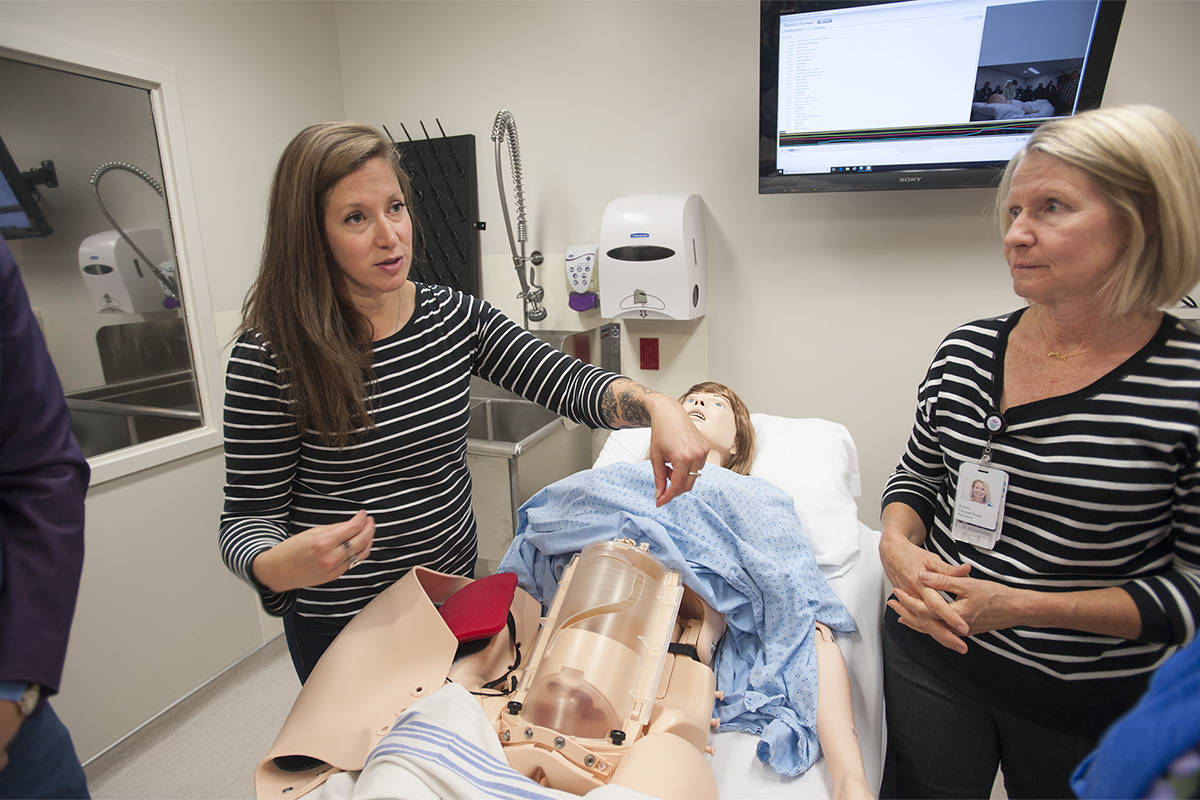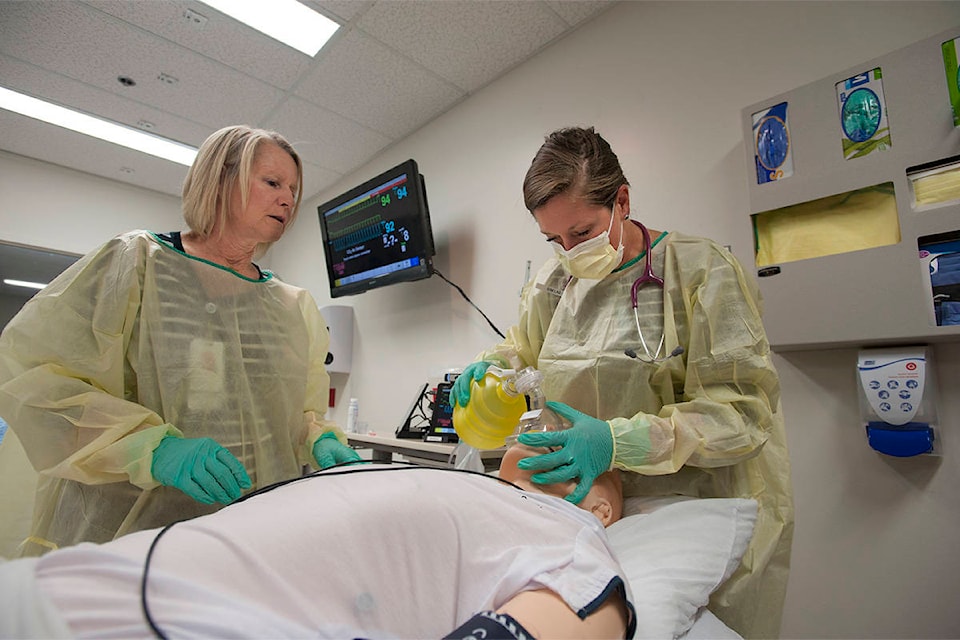Chris Hayes, 59, is unresponsive. He is not breathing. He is suffering from an overdose.
Whitehorse General Hospital staff work on him. Eventually, he’s resuscitated with naloxone.
Hayes is a fake. He’s a dummy, a high-tech one.
Those who tended to him were instructed to do so like they would a real person, though. It’s hard not to when he’s capable of breathing, blinking, even talking.
The Yukon Hospital Corporation opened its clinical simulation centre, “Sim Lab,” for short, this week.
“It improves patient safety and our response times is really what it does,” said Sarah Harrison, simulator lead and a clinical nurse educator, who led a five-minute demonstration on Sept. 12. “We’re able to respond quicker, we respond better as a team, we communicate better and then we get the patient the treatment that they need immediately.”
The centre is mobile. It can be transported to other places – the Dawson City hospital, for instance.
There’s a whole family, as it were — mother and baby simulators. All can move. Their skin looks and feels real.
After the demonstration, the baby was crying like the real deal. An umbilical line can be attached. The faux child can be incubated.
Asked what staff want to get out of the technology, Harrison said, “Trauma’s the big one that we want to improve on because we just don’t see enough of them and we don’t see enough pediatric trauma, we rarely see newborn baby trauma, but do see premature births, so we can practice that, as well.”
That’s where the simulated mother comes in, the first of its kind at the hospital. There’s a delivery module inside the manikin.
“We delivered eight times in one day with this one in our practice days,” Harrison said — to laughs. She is being completely serious, though.
“Her eyelashes are quite beautiful.”
Training on these dolls is mandatory for staff. Manikins were used before for things like CPR. They pale in comparison to this new technology, however, which is beginning to be used across the continent.
Someone behind the scenes is tracking the progress of trainees. They’re on the lookout for good communication and, of course, results.
For the purposes of the demonstration, Jan Rossiter, via software, kept tabs on Harrison and Joanne Pare, another clinical nurse educator.
“I can control various vital signs, I can control the eyes, blinking, breathing, different cardiac rhythms, the strength of pulses throughout the manikin and then change those responses based on what the clinicians do,” he said.
Rossiter has been in the Yukon this week in order to help staff make the switch to the new technology.
Simulation can be done manually, controlled by staff. The person at the controls can determine whether participants are intervening properly and can manipulate the trajectory of the session. There are also pre-programmed scenarios.
Brian Gillen, chair of Yukon Hospital Corporation’s board, said the simulators will help prevent Yukoners from having to travel Outside to get medical attention.
“With this lab, clinicians can now sharpen and refine their skills without risk and be prepared to handle many more situations that could come their way,” he said. “The complexities of patient care today means clinicians must master not just their clinical knowledge and skills but their ability to communicate clearly and effectively with patients, families and colleagues, especially during the most serious situations, and the Sim Lab will help people do that.”
The Yukon Hospital Foundation raised $1 million to make this possible.
Contact Julien Gignac at julien.gignac@yukon-news.com

